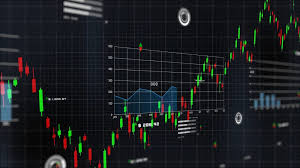
Understanding Crypto Trading Charts for Successful Investments
In the fast-paced world of cryptocurrency trading, the ability to read and interpret crypto trading charts is essential. These charts provide a visual representation of the price movements and trading volumes of cryptocurrencies over time. For traders, understanding these charts is critical to making informed decisions. In this article, we will delve into the types of charts available, the key components of those charts, and how to effectively use them to enhance your trading strategies. For further insights, visit Crypto Trading Charts http://www.recursosanimador.com/scripts/librovisitas2.php?pagina=9787.
Types of Crypto Trading Charts
There are several types of charts commonly used in crypto trading, the most popular of which are:

- Line Charts: These charts display the closing prices of a cryptocurrency over a specific time frame. They are simple and provide a clear indication of the trend direction but lack detailed information about intra-period price movements.
- Bar Charts: Bar charts offer more information than line charts. Each bar shows the open, high, low, and close prices (OHLC) for a given time period, allowing traders to get a better understanding of price volatility.
- Candlestick Charts: Similar to bar charts, candlestick charts depict the OHLC price data but in a more visually intuitive manner. The body of the candlestick shows the open and close prices, while the wicks represent the high and low prices. Candlestick patterns can also indicate market sentiment.
- Volume Charts: Volume charts show the number of assets traded over a specific time period. Volume is a crucial indicator that can correlate with price actions – higher volume often indicates stronger price movements.
Key Components of Crypto Trading Charts
Understanding the components of crypto trading charts is essential for effective trading. Here are the key elements:
- Time Frame: Traders can choose different time frames for their charts, from one minute to one month or more. The choice of time frame depends on individual trading strategies; day traders often prefer shorter time frames, while long-term investors might analyze daily or weekly charts.
- Price Axis: This vertical axis displays the price of the cryptocurrency. Observing the price movements along this axis helps traders to identify trends and resistance or support levels.
- Volume Indicator: Typically located below the main price chart, the volume indicator shows how much of the asset was traded over given time intervals. Understanding volume trends can help forecast future price movements.
- Trend Lines: These are lines drawn to connect historical price points, helping traders to identify upward, downward, or sideways trends. Recognizing these trends can aid in making more strategic entries and exits.

Reading and Interpreting Crypto Trading Charts
Both novice and experienced traders can benefit from learning how to read and interpret crypto trading charts. Here are some tips to enhance your skills:
- Identify Patterns: Look for recognizable patterns such as head and shoulders, flags, or triangles. These patterns can provide insights into potential market movements.
- Use Indicators: Many traders rely on technical indicators, such as moving averages, MACD, or RSI, to confirm trading signals provided by the charts. These indicators can provide additional context to price movements.
- Recognize Support and Resistance: Support levels are where the price tends to stop falling and may rise, while resistance levels are where the price often stops rising and may fall back. Recognizing these levels can aid in making more informed trading decisions.
- Practice: The best way to become proficient at reading charts is through practice. Use demo accounts or backtest your strategies in historical data to gain familiarity without financial risk.
Conclusion
Crypto trading charts are invaluable tools for traders looking to navigate the complexities of the cryptocurrency market. By understanding the different types of charts, key components, and how to read and interpret them, traders can enhance their decision-making processes and potentially increase their profitability. Whether you are a beginner or an experienced trader, investing time in learning about crypto trading charts will pay off in your trading journey.

